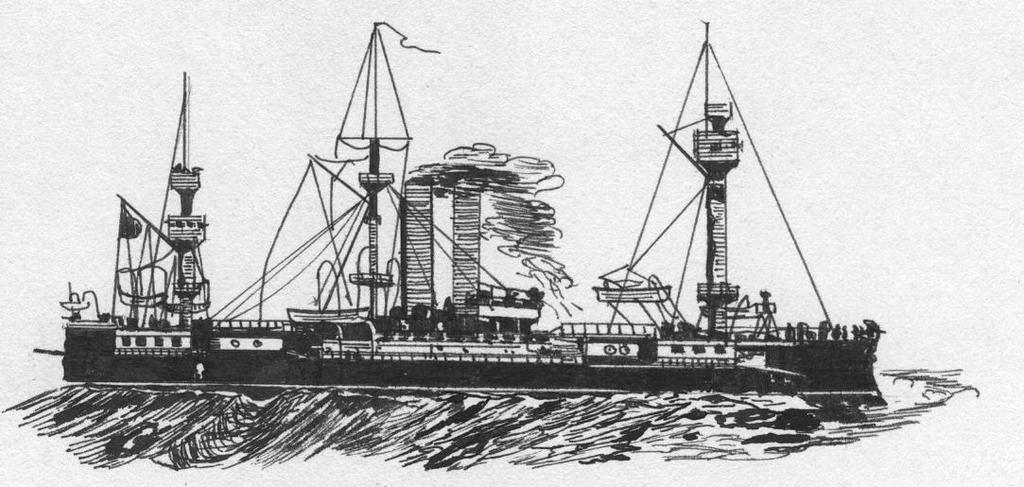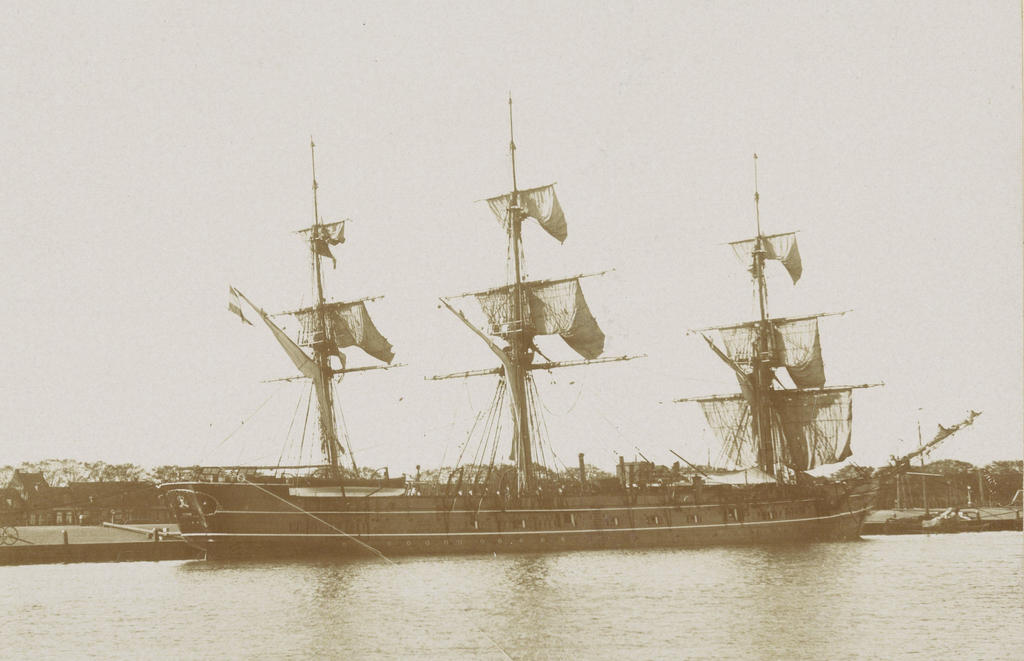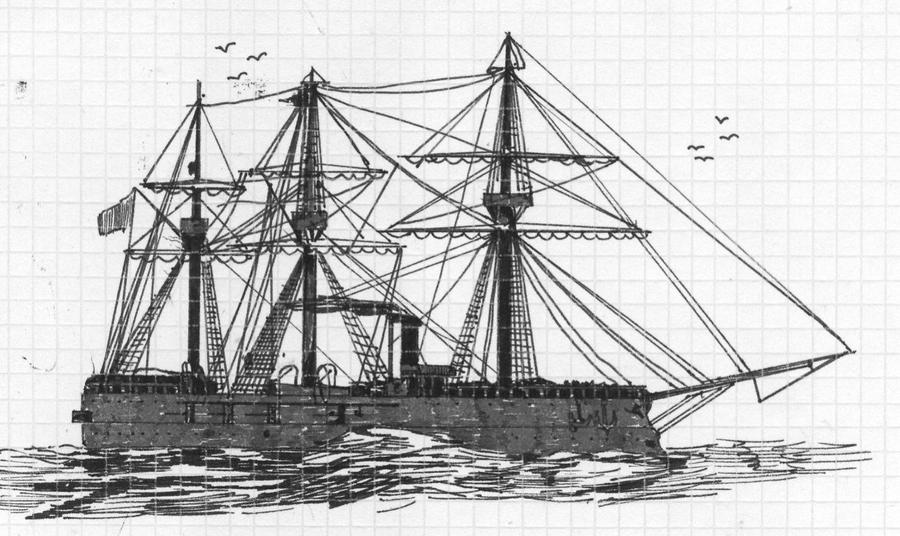The Dutch screw steamship 1st class Hr. Ms. Johan Willem Friso (1) captain J.C. Commijs (2) departed on 14 October 1895 from Vlissingen, Netherlands towards the Dutch East Indies for exchanging naval personnel. Between 26 November-5 December 1895 she visited Rio de Janeiro, Brazil and arrived on 29 January 1896 at Batavia, Dutch East Indies. She returned on 2 March 1896 to the Netherlands, visiting Cape Town, South Africa between 12-21 April 1896 and arrived on 23 June 1896 at Nieuwediep, Netherlands.
At the arrival in the roads of Rio de Janeiro, Brazil on 26 November 1895 was first the Brazilian government and the rear admiral (3) on board of the Brazilian battleship Riachuelo (4) saluted. Further more were there lying the Dutch screw steamship 1st class Hr. Ms. Van Speyk (5) and the Brazilian training ship Benjamin Constant (6) and the smaller warships Primeiro de Março, Carioca, Parnahyba and Tiradentis. On the 28th arrived the Italian torpedo cruiser Lombardia (7) followed by the French cruiser Dubourdieu (8), flagship of rear admiral Pougin de la Maisonneuve. Dutch midshipmen were allowed to visit the Riachuelo and the Lombardia.
Notes
1. Also called frigate, call sign GQLN, laid down as the Kortenaer at the naval yard at Amsterdam, Netherlands on 22 October 1883, launched on 10 June 1886, commissioned on 1 February 1888, decommissioned on 16 September 1896 and sold on 25 May 1899 at Willemsoord for ƒ 82.154, 60½ to F.H. de Goeij cum suis at Den Helder to be broken up. Dimensions 80-91,85 x 12,64 x 7,00 metres, displacement 3.710 ton, horsepower 3.133 hp, speed 14,8 miles, crew numbered 280 men and an armament of 6-17cm guns and 8-12cm guns. Engines and boilers manufactured at the Nederlandse Stoomboot Mij, Rotterdam, Netherlands. Iron-built wood planked.
2. Johan Cato Commijs (10 March 1842 The Hague, Netherlands-10 December 1925 The Hague), promoted to the rank of rear admiral and dismissed from service on 1 November 1896.
3. The commanding officer of the Van Speyk wrote in his report that she was a ram ship and mentioned the name of the rear admiral namely Pinto da Luz. Probably this was José Pinto da Luz (1843-1903), admiral and between 19 August 899-15 November 1902 minister of navy in the cabinet of Campo Sales.
4. Laid down by Samuda Brothers, London, England on 31 August 1881, launched on 7 June 1883, commissioned on 19 November 1893, decommissioned in 1910 and sold to be broken up in Scotland.
5. Laid down at Rijkswerf Amsterdam, Netherlands on 9 February 1880, launched on 7 June 1882, commissioned on 1 March 1887, decommissioned and stricken on 16 September 1897, converted into an accommodation ship in 1904 and early March 1947 sold to be broken up.
6. Training ship which could be considered to be an unprotected cruiser, laid down by F.C. de la Méditerranée, La Seyne, France on 18 November 1891, launched on 11 October 1892, completed on 4 September 1894 and disarmed in March 1926.
7. Of the Regioni-class protected cruisers, consisting of the Lombaria, Eturia, Umbia, Liguria, Elba and Puglia, laid down at the Regio Camtieri do Castellammare di Stabia, Italy on 19 November 1889, launched on 12 July 1890, commissioned on 16 February 1893 and sold to be broken up on 4 July 1920.
8. Unprotected cruiser, laid down at Arsenal de Cherbourg, France in 1880, launched in 1884, completed in September 1886 and stricken in 1899.
Sources
Jaarboek van de Koninklijke Nederlandsche Zeemacht 1895-1896
http://warshipsresearch.blogspot.com/








No comments:
Post a Comment